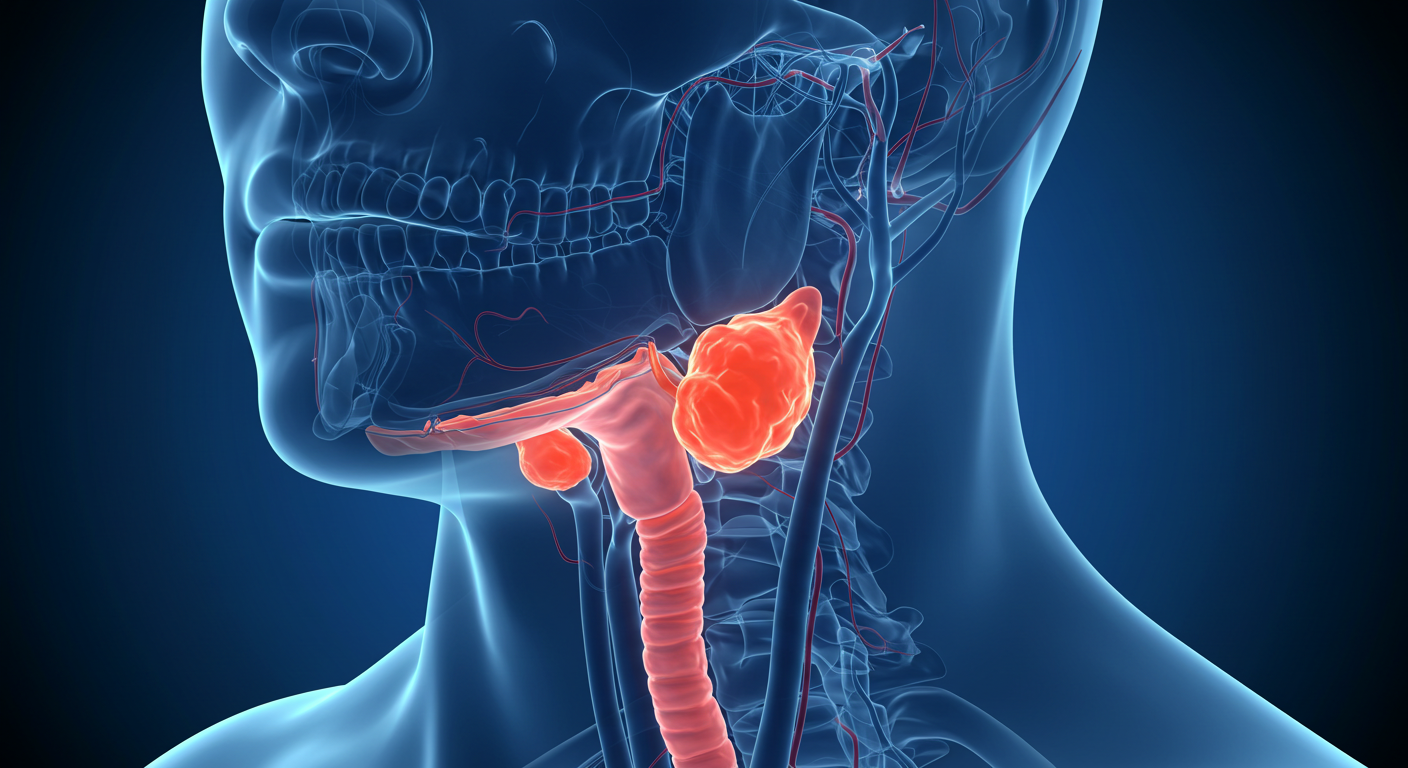Have you ever heard of adenoids? While they may not be the most talked-about part of our bodies, these small masses of lymphatic tissue play a crucial role in our immune system. Nestled at the back of your nasal cavity, adenoids are like unsung heroes that help protect us from infections—especially during childhood. However, when things go awry and inflammation sets in, it can lead to a condition called adenoiditis. Understanding what adenoids do and how they affect our health is essential for everyone, especially parents navigating their children’s well-being. Let’s dive deeper into this often-overlooked part of human anatomy and discover its significance!
Functions of Adenoids in the Body
Adenoids play a vital role in the immune system, particularly during childhood. Located at the back of the nasal cavity, these small masses of lymphatic tissue help trap pathogens that enter through the nose.
They act as a first line of defense against viruses and bacteria. By filtering out harmful invaders, adenoids help reduce infections in young children.
Additionally, they contribute to the development of immunity. Adenoids expose the body to various antigens, helping train immune responses early on.
As children grow older, their adenoids often shrink and may become less active. This natural reduction reflects changes in immune needs as we age.
While important for early health, enlarged or inflamed adenoids can lead to complications like breathing difficulties or recurrent ear infections. Understanding their functions helps clarify why maintaining healthy adenoid status is essential during formative years.
Symptoms of Adenoiditis
Adenoiditis often presents with a range of symptoms that can affect daily life. One of the most common signs is nasal congestion. This can lead to difficulty breathing, especially at night.
Children suffering from adenoiditis may also experience frequent ear infections or a persistent cough. The swelling in the adenoids can block the Eustachian tubes, leading to fluid buildup and discomfort.
Another noticeable symptom is snoring. Due to restricted airflow, sleep quality often diminishes, resulting in fatigue during the day. Additionally, bad breath might occur because of bacterial growth related to inflammation.
In some cases, facial appearance changes as children try to breathe through their mouths instead of their noses. These symptoms not only impact physical health but can also affect emotional well-being by disrupting everyday activities and social interactions.
Causes and Risk Factors for Adenoiditis
Adenoiditis is often triggered by infections. Viruses, such as the common cold or influenza, can lead to inflammation of the adenoids.
Bacterial infections also play a significant role. Streptococcus pneumoniae and Haemophilus influenzae are commonly involved in these cases.
Children are more susceptible due to their developing immune systems. Their adenoids serve as a first line of defense against pathogens but can become overwhelmed.
Allergies contribute too. Allergic reactions to pollen, dust mites, or pet dander can irritate the tissues surrounding the adenoids.
Environmental factors matter as well. Exposure to secondhand smoke or pollutants increases the risk of respiratory issues that may lead to adenoiditis.
Genetics might also play a role; children with family histories of frequent ear and throat infections are at higher risk for developing this condition.
Diagnosis and Treatment Options for Adenoiditis
Diagnosing adenoiditis typically begins with a thorough examination by a healthcare professional. They will assess symptoms, such as nasal congestion and difficulty breathing. Sometimes, imaging tests like X-rays may be required to visualize the size of the adenoids.
For treatment, options vary based on severity. Mild cases often respond well to at-home care, including saline nasal sprays or decongestants to ease discomfort.
In more severe situations, antibiotics might be prescribed if an infection is suspected. Corticosteroids can also help reduce inflammation in the adenoids.
If symptoms persist despite other treatments, surgery known as adenoidectomy may be considered. This procedure involves removing enlarged adenoids and can provide significant relief for chronic issues affecting breathing or sleep quality.
Regular follow-ups ensure that any recurring problems are managed effectively and that overall health improves post-treatment.
Prevention of Adenoiditis
Preventing adenoiditis starts with maintaining strong hygiene practices. Encourage regular handwashing, especially during cold and flu season. This simple act can significantly reduce the spread of viruses that lead to infections.
Promoting a smoke-free environment is crucial as well. Secondhand smoke can irritate the respiratory system, making it more susceptible to infections.
A balanced diet rich in vitamins and minerals supports immune health. Foods high in antioxidants help strengthen the body’s defenses against illnesses.
Staying hydrated is equally important. Proper hydration aids mucous membrane function, reducing irritation in the throat and nasal passages.
Ensure children receive recommended vaccinations on schedule. Vaccines protect against various diseases that could contribute to adenoid problems later on.
Common Misconceptions about Adenoids
Many people confuse adenoids with tonsils. While both are part of the lymphatic system, they serve different functions and exist in distinct locations. Tonsils sit at the back of the throat, while adenoids are located higher up behind the nose.
Another common misconception is that adenoid issues only affect children. Although they enlarge during childhood to fight infections, adults can also experience problems related to their adenoids.
Some believe surgery is always necessary for enlarged adenoids. In many cases, doctors recommend observation or non-invasive treatments first before considering surgical options.
There’s a myth that removing adenoids will weaken the immune system. On the contrary, if they become problematic, removal often leads to improved health and fewer infections in children due to less obstruction and easier breathing.
Conclusion
Understanding adenoidid and its implications can be crucial for many, especially parents of young children. Adenoids play a significant role in our immune system by helping to protect against infections. However, when they become inflamed or infected—known as adenoiditis—it can lead to various health issues.
Recognizing the symptoms early, such as nasal congestion or frequent ear infections, is vital. Knowing the causes and risk factors helps in managing potential problems effectively. It’s equally important to explore diagnostic methods and treatment options available.
Preventive measures exist that focus on maintaining good overall health. This includes practicing proper hygiene and being aware of environmental allergens that may contribute to inflammation.
There are several misconceptions surrounding adenoids—some people think their removal leads to more illnesses later in life while others believe they serve no purpose after childhood. Understanding the truth about these small glands can help alleviate fears and promote better health choices.
Adenoidid affects many individuals throughout their lives; understanding it allows for informed decisions regarding treatment and prevention strategies tailored specifically for those impacted by this condition.

